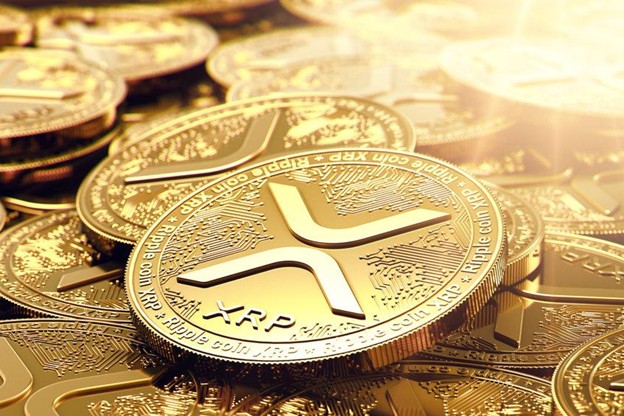
Cryptocurrencies have become popular investment options, and XRP, a Ripple token, is among the most preferred tokens. Whether you are interested in it for the functionality, speed, or the potential growth in XRP price, it is important to understand XRP before investing.
This guide is for first-time investors looking to understand what XRP is, why it exists, the technologies that back it, the associated risks, and potential benefits. Keeping an eye on the XRP price is essential, as it may be influenced by factors such as market trends, legal developments, and adoption rates.
Contents
What Is XRP?
XRP is an open-source digital asset developed by Ripple Labs to facilitate cross-border payments quickly and cheaply. For this reason, it is a rather unique cryptocurrency, serving a bridge currency function and performing rapid transaction processing. As for the changes in price with XRP, they often reflect market sentiment and growing partnership networks that Ripple currently works with. Unlike Bitcoin, which has for the most part been defined as a store of value or, more colloquially, “digital gold“, XRP is designed for remittance. It operates on Ripple’s XRP Ledger (XRPL), a decentralized digital token that facilitates the real-time settlement of financial transactions.
Ripple is seeking banking partners to offer them a service built on XRP for faster and cheaper cross-border payments. This makes it different from other cryptocurrencies since its major goal is to be used in the world economy. As of 2023, Ripple has partnered with over 300 financial institutions globally, including major players such as Santander, American Express, and SBI Holdings.
How Does XRP Work?
It is important to note that the XRP price does not mine like most other digital currencies but employs its consensus algorithm. Notably, validators are responsible for checking all the transactions on the XRP Ledger to guarantee their reliability and latency. Key benefits include:
- Speed: A transaction takes 3 to 5 seconds, which is much faster than Ethereum. Because of this near-instant transaction speed, it has seen further adoption into payment providers such as MoneyGram and SBI Remit.
- Low fees: XRP transactions range from fractions of a cent, which means that users can conduct large numbers of microtransactions for free. In real-world applications, remittance companies have reported saving up to 70% in costs using XRP compared to traditional systems like SWIFT.
- Scalability: Compared to traditional payment giants such as Visa, the XRPL can process up to 1,500 transactions per second. This scalability makes XRP one of the potential infrastructures for global financial systems.
What Makes XRP Unique?
XRP has multiple unique features that set it apart from other cryptocurrencies. Today, Ripple offers products, including RippleNet, to help financial institutions enhance cross-border payment processes. XRP is an ideal bridge currency as it enables the swift conversion of one currency to the other; there is no need for multiple nostro accounts.
Furthermore, the increasing number of banks and payment service providers investing in Ripple is evidence of its clout. In contrast with many other cryptocurrencies, which depend mostly on speculative demand, XRP has actual uses that add to its worth.
Why Invest in XRP?
Here are some reasons why XRP attracts investors:
- Real-world application: Various companies and banks are already using it, which gives it credibility and practicality. For instance, Santander Bank has implemented Ripple’s technology for its One Pay FX platform, enabling same-day international payments in several currencies. This is a significant improvement over traditional methods that can take days.
- Low transaction costs: It benefits those wishing to open many trades or make frequent transfers. For example, the average transaction cost on the XRP Ledger is approximately $0.0002, making it one of the most cost-effective cryptocurrencies for microtransactions.
- Adoption worldwide: Ripple’s partnerships with other companies and entities show increasing adoption. As of 2023, Ripple boasts over 300 financial partnerships globally, including major institutions like American Express and Standard Chartered, underlining its growing acceptance in the financial ecosystem.
- Cost sensitivity: XRP is affordable even to the initial investors because the price per coin is comparatively low.
But, it is important to consider the pros and cons of this before jumping right into it.
Risks of Investing in XRP
One of the primary risks associated with investing in XRP is its ongoing legal and regulatory challenges. The lawsuit between Ripple Labs and the U.S. Securities and Exchange Commission (SEC), which began in 2020, remains a critical concern. While partial rulings have provided some clarity—for instance, a July 2023 decision that XRP is not inherently a security—key aspects of the case remain unresolved.
- Legal risk: XRP has been involved in legal cases that make its regulatory status unclear, such as the current case between Ripple Labs and the SEC. This case challenges the legal nature of XRP as a security, which, if decided against Ripple, can affect its value and future.
- Acquisition risks: Pessimists disagree with Ripple’s centralized control and ownership of XRP, noting that it makes up a considerable share of the current supply.
- Market volatility: Any cryptocurrency, including XRP, can be subject to price fluctuations due to changes in investors’ sentiments, important events, and tendencies in the global economy.
- Competition: Traditional systems such as SWIFT compete with XRP and other digital currencies such as Stellar (XLM).
Tips for XRP Investors
To invest in XRP, remember the following:
- Diversify: It is dangerous to invest only in XRP. Diversify to avoid risks associated with ensuring that you have other forms of investments, such as cryptocurrencies.
- New regulations: Legal updates are Another significant driver of the XRP token’s price change. For example, positive results regarding the Ripple-SEC case may boost confidence.
- Technical analysis: This focuses on specific patterns and trends on the Binance platform and fits price charting into trading considerations.
- Dollar-cost average: Start with a limited number of shares in the given stock and continue to buy more as you gain more trading experience.
- Stay safe from fraud: Some exchanges and wallets are fake, and you should not deal with them. Avoid getting involved in overly glowing opportunities that imply investing in this kind of business will send you to heaven.
Conclusion
For this reason, XRP as an investment tool is an interesting proposition, but it is by no means without risks. When developing strategies, it is important to understand its technology, usage, and further utilization possibilities. It is crucial always to gain knowledge of particular developments, invest in as many areas as possible, and practice trading XRP without using your money through a reputable site.
It is always wise to research your options, know your risk profile, and always expand your investment with what you are willing to lose. This, in turn, means that if the said techniques are applied appropriately, Ripple could augment an investor’s portfolio of other cryptocurrencies.









